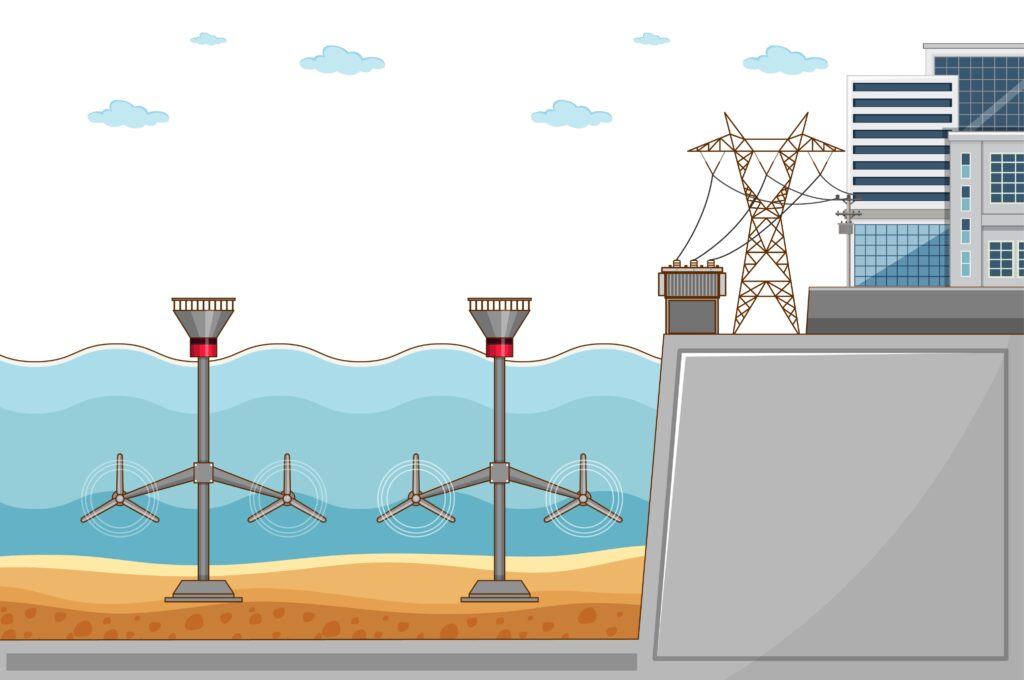Oman’s Nama Secures Long-Term Power and Water Supply Deals
Image Source: Times of Oman
Nama Power and Water Procurement Company, Oman’s exclusive procurer of electricity and desalination projects, has entered into new long-term agreements with four existing power and water plants. This strategic move aims to ensure a stable supply of essential utilities while driving investment in the sector.
The agreements, secured following a competitive tender process, cover a combined capacity of over 1,500 megawatts of electricity and 200,000 cubic meters of desalinated water per day. The involved plants – Barka 1, Barka 2, Al Rusail, and Manah – will continue operations under these new contracts, extending up to nine years.
A Strategic Partnership
Nama’s decision to renew contracts with existing plants signifies a strategic shift towards fostering long-term partnerships with industry players. By providing stability and predictability, these agreements are expected to boost investor confidence in Oman’s power and water sector, encouraging further investments and technological advancements.
Economic and Environmental Impact
The new contracts are anticipated to contribute to lowering energy costs for consumers while supporting the growth of Oman’s economy. Moreover, by ensuring a stable power supply, the agreements will facilitate the development of other sectors, such as manufacturing and tourism.
Nama’s commitment to sustainability is evident in its efforts to align the power and water sector with Oman’s Vision 2040. The company is actively promoting renewable energy integration and energy efficiency initiatives to reduce the nation’s carbon footprint.
Challenges and Opportunities
While these agreements represent a significant step forward, the power and water sector faces ongoing challenges, including the increasing demand for electricity and water, the need for infrastructure upgrades, and the integration of renewable energy sources.
To address these challenges, Nama is likely to focus on several key areas:
- Infrastructure development: Investing in grid reinforcement and expansion to accommodate growing demand.
- Technological advancements: Exploring and adopting innovative technologies to improve efficiency and reduce costs.
- Human capital development: Building a skilled workforce to support the sector’s growth.
- Regulatory framework: Enhancing the regulatory environment to attract investments and promote competition.
By proactively addressing these challenges, Oman can position itself as a regional leader in the power and water sector, contributing to its sustainable development goals.
Challenges and Opportunities
- Water Scarcity: Given Oman’s arid climate, water desalination is a critical component of its power and water sector. However, desalination is an energy-intensive process. Explore the challenges associated with balancing water demand and energy consumption, and discuss potential solutions such as advanced desalination technologies and water conservation measures.
- Grid Integration of Renewables: As Oman increases its renewable energy capacity, integrating these intermittent sources into the existing grid becomes more complex. Discuss the technical challenges and solutions, such as energy storage systems, smart grids, and demand response programs.
- Financing: While Nama’s new agreements are a step in the right direction, the power and water sector requires significant investments. Analyze the financing options available, including public-private partnerships, green bonds, and international funding.
Technological Advancements
- Digitalization: Discuss the role of digital technologies, such as the Internet of Things (IoT) and artificial intelligence, in improving the efficiency and reliability of the power and water sector.
- Energy Storage: Explore the potential of battery storage, pumped hydro storage, and other energy storage technologies to enhance grid stability and accommodate renewable energy fluctuations.
- Advanced Materials: Discuss the use of advanced materials in desalination plants, solar panels, and other power generation equipment to improve performance and reduce costs.
International Cooperation
- Foreign Direct Investment: Analyze the role of foreign direct investment in Oman’s power and water sector, highlighting the benefits and challenges associated with attracting international capital.
- Technology Transfer: Discuss the importance of technology transfer and knowledge sharing with international partners to accelerate the development of the sector.
- Regional Cooperation: Explore opportunities for regional cooperation in the power and water sector, such as the Gulf Cooperation Council (GCC) initiatives.
Climate Change and Water Scarcity
- Climate Impacts: Discuss the potential impacts of climate change on Oman’s water resources and power generation, including rising sea levels, extreme weather events, and increased water demand.
- Adaptation Strategies: Explore strategies for adapting to climate change, such as developing drought-resistant crops, improving water management practices, and investing in resilient infrastructure.
Renewable Energy Integration
- Solar and Wind: Discuss the potential of solar and wind energy in Oman, considering factors such as resource availability, technological advancements, and economic viability.
- Green Hydrogen: Explore the role of green hydrogen as a clean energy carrier and its potential applications in Oman’s energy sector.
- Other Renewables: Consider the potential of other renewable energy sources, such as geothermal and biomass, and their suitability for Oman’s specific conditions.
Additional Considerations
- Case Studies: Highlight successful renewable energy projects in Oman and the lessons learned from these initiatives.
- Policy Recommendations: Propose policy recommendations to further accelerate Oman’s energy transition and achieve its sustainability goals.
- Comparison with Other Countries: Compare Oman’s progress in the power and water sector with other countries in the region and globally.

